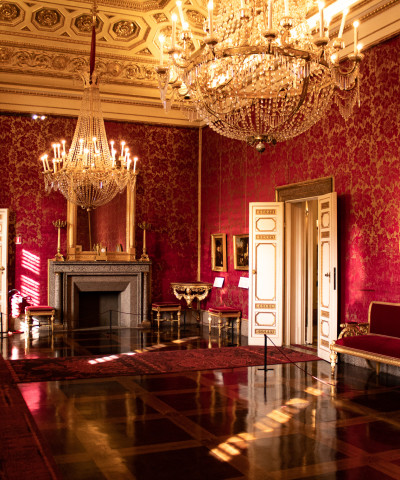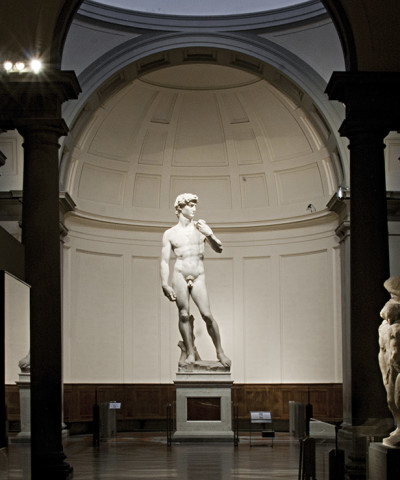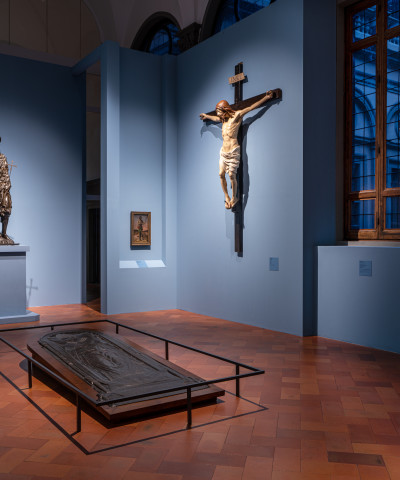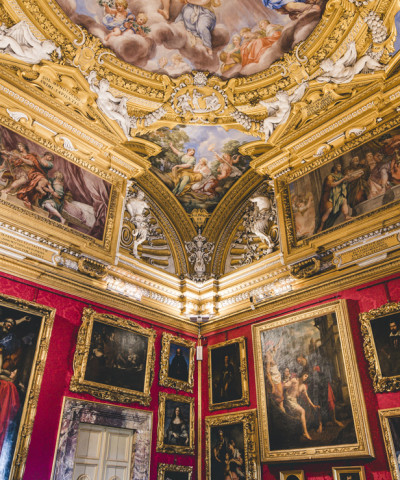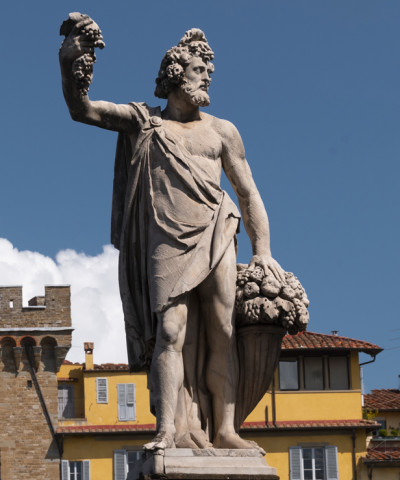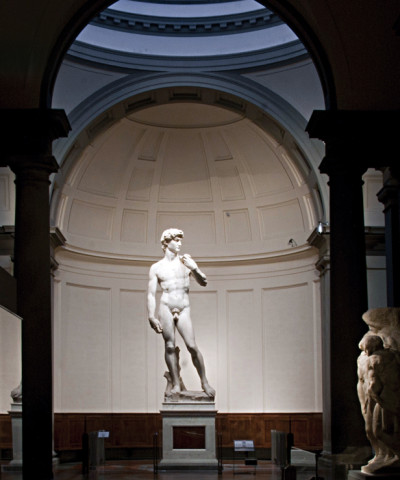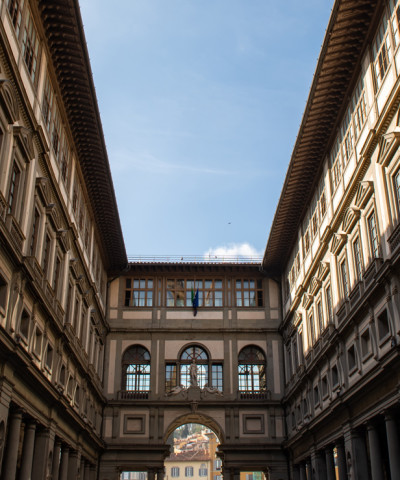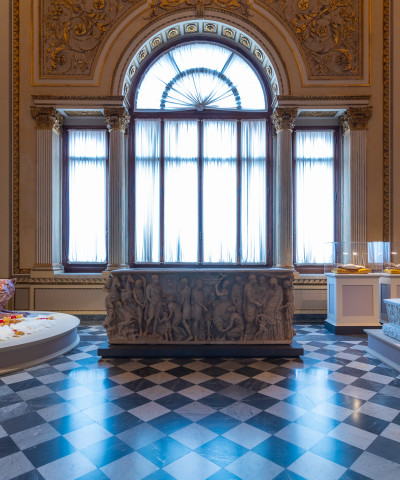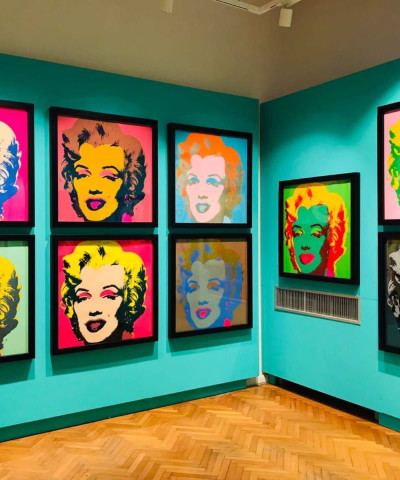The Uffizi masterpieces
28 works, a thousand stories. Ce tells Antonio Natali, director of the gallery
A list of Beauty, timeless beauty that recounts the history of art not through words but through wonderfully balanced, fascinating images. This is the list drawn up by Antonio Natali, director of the Uffizi, in 2008, a selection of unmovable masterpieces in the great Florentine museum. He also decided to establish a set of principles with regard to moving these works “because the rules can be broken but not the principles.” And in answer to the question as to what these rules are, Natali says without hesitation: “First, the state of conservation, and the importance of the requested work in the context of the museum, but also the scientific value of the exhibition that requires the loan.”
“There are twenty-eight works that should never leave the Uffizi, because they qualify the Gallery and are the works that each visitor expects to find here. A list created by referring to the law,” Natali continues to explain. Not that the director is against exhibitions: spreading knowledge is important, and a tangible example is the project La città degli Uffizi which promotes local exhibitions.
Like the many exhibitions despatched from Florence to reach distant countries, such as Japan and China; but those have consisted mostly of works from the storerooms. If the works on that list cannot cross national borders by law, they should not, in Natali’s opinion, even go to exhibitions in Italy, precisely because visitors to the Uffizi (especially those from the other side of the world) have the right to find those works in the museum’s rooms.
In Room 2 at this time, some architectural restructuring and museum reorganisation is under way, where the three Maestà by Cimabue, Duccio di Buoninsegna and Giotto are exhibited (three works on the Unmovable list, which we’ll come back and see at the end of April, ed.). So as not to move the three works and allow for the reorganisation, it was necessary to build huge special containers to protect them and maintain the correct micro-climate.
During the Expo too, as many as 27 of the 28 works included on the list will be exhibited. The only one absent is the Adoration of the Magi by Leonardo, which will return to the museum at the end of the ongoing restoration at the Opificio delle Pietre Dure. For you, under the exceptional leadership of Antonio Natali, we had a long visit for a closer look to see why visitors seek out these works in particular.
The first is the Diptych of the Dukes of Urbino, circa 1465-1472, by Piero della Francesca. “As we can see, the dimensions are such that it could be moved without any problems and the beauty of the work itself does not count,” explains the director, “After all, what is commonly understood as beauty is, for everyone, here in the next room, in the Birth of Venus and Spring by Sandro Botticelli.
But am I really the only one with such a passionate soul as to prefer the Rosso to the Botticelli? Or is art reduced to a mere fetish, also because of the decline of art history teaching in schools?
If we do not understand that every painting is a poetic text (expressed in figures rather than words), a text where there is a plot, connected to the time and thinking of when it was created, then one sees only coloured images...”. A vision that involves and also overturns the rules that brought us here, to pass so quickly by Botticelli’s beautiful women – where an Asian crew is shooting, “because they, who perhaps understand better than us the educational value of art, put together exhibitions using copies of works or projections.” Natali smiles. He stops before the Baptism of Christ by Leonardo da Vinci and Andrea del Verocchio.
Leonardo’s style is recognizable in the richly dressed Angel in profile and in the water that washes the feet of Christ and John the Baptist: “With infrared, we’ve seen that there was a typical local landscape of the tme, a suburban villa garden. Leonardo flooded everything, creating a marsh like that at Fucecchio,” our guide explains.
“With this work one is compelled to question the plot: there is a white dove that scares away a bird of prey, because that really is a bird of prey, we see by the hooked beak and twisting claws. In nature a dove doesn’t chase a raptor, if anything, the opposite. It’s clear that we are talking about symbols… as the Scripture’s commentators write, it’s the Holy Spirit defeating heresy and sin. And then the two angels, which are actually an angel and Archangel: how can we not suspect that there are two fundamental figures in the painting, and that the work could be a tribute to the Archangel Michael (San Michele)? The very figure painted by Leonardo, who is the owner of the church of San Salvi for whom the work was made. But if no one explains these things, they might as well be cereal box picture cards.”
We move on to the Tondo Doni, and in a room that is a miracle of balance immersed in a deep full red, Natali says, “The happiest intuition in this room is the statue at the centre. Not just any statue, but Cleopatra, who, as Vasari said, gave the go ahead to Modern Mannerism with the Laocoon and the Appollo of the Belvedere. Look at the strong poignant relationship between the Tondo and the Greek sculpture: their heads are tilted the same way.”
Next is the Sant’Anna Metterza by Masaccio and Masolino, a perfect synthesis of the early Florentine Renaissance, where we clearly recognize Masaccio’s hand in the figure of the Virgin and Child; then the Hall of Niobe, a sculpture gallery with the embrace of Niobe and the Younger Daughter, breathtakingly beautiful. And then Titian: Venus looking provocatively toward the viewer, encompassing all the mythological styles but in a modern setting, a domestic Renaissance interior.
The Madonna with the Long Neck is an unfinished work by Parmigianino, also on the Unmovable list. There are two works by Raphael: the Madonna with Child and St. John that Giorgio Vasari claims was painted by Raphael for his friend Lorenzo Nasi, a Florentine merchant, on the occasion of his marriage to Sandra Canigiani; and the Portrait of Pope Leo X with Cardinals Giulio de’ Medici and Luigi de’ Rossi, portraying Giovanni de’ Medici, son of Lorenzo the Magnificent and Pope from 1513, among the Cardinals Giulio de’ Medici the future Pope Clement VII, left, and Luigi de Rossi, his cousin, right.
Caravaggio’s powerful Medusa bursts at the end of a row of doors that frame it. Twenty-eight masterpieces that visitors to the Uffizi expect to find, for their beauty, but also because of the thousands of stories and symbols behind each of them that bind them to this place.










